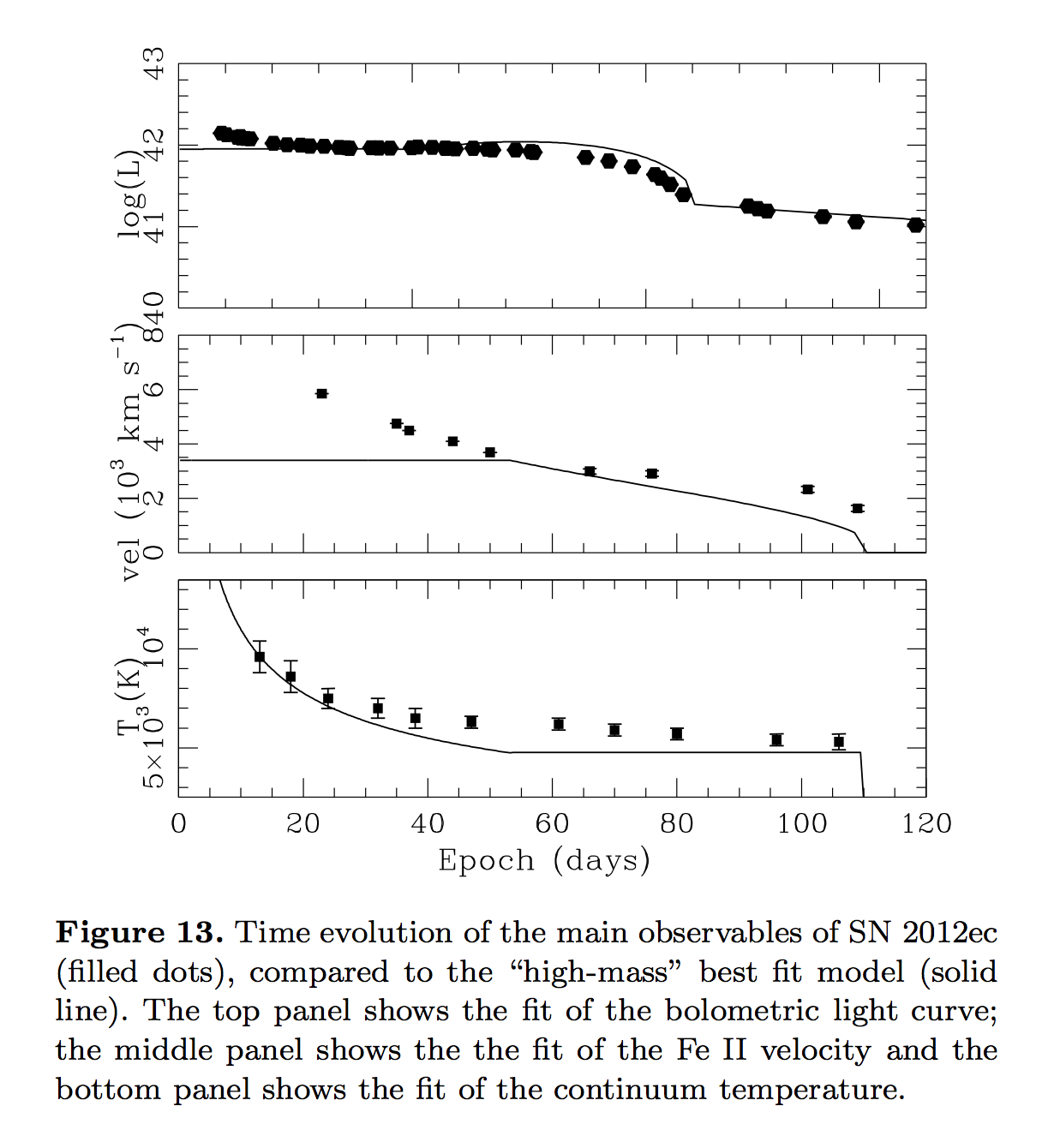Padova-Asiago Supernova Group
Highlights
SN 2012ec: mass of the progenitor from PESSTO follow-up of the photospheric phase
Barbarino, C. et al. 2015, MNRAS 448, 2312 (link to pdf)
We present the results of a photometric and spectroscopic monitoring campaign of SN 2012ec, which exploded in the spiral galaxy NGC 1084, during the photospheric phase. The photometric light curve exhibits a plateau with luminosity L= 0.9 times 10 to 42 (erg s to -1) and duration ~90 days; which is shorter than standard Type IIP supernovae. We estimate the nickel mass M(56Ni)= 0.040 pm 0.015 Msun from the luminosity at the beginning of the radioactive tail of the light curve. The explosion parameters of SN 2012ec were estimated from the comparison of the bolometric light curve and temperature and velocity evolution of the ejecta with predications from a hydrodynamical model. We derived an envelope mass of 12.6 Msun, an initial progenitor radius of 1.6 times 10 to 13 (cm) and explosion energy of 1.2 foe. These estimates agree with an independent study of the progenitor star identified in pre-explosion images, for which an initial mass of M=14-22 Msun was determined. We have applied the same analysis to two other type IIP supernovae (SNe 2012aw and 2012A), and carried out a comparison with the properties of SN 2012ec derived in this paper. We find a reasonable agreement between the masses of progenitor obtained from pre-explosion images and the masses derived from hydrodynamical models. We estimate distances to SN 2012ec with Standardized Candle Method (SCM) and compare with other estimates based on other primary and secondary indicators. SNe 2012A, 2012aw and 2012ec all follow the standard relations for SCM for the use of Type IIP SNe as distance indicators. 29
Barbarino, C. et al. 2015, MNRAS 448, 2312 (link to pdf)
We present the results of a photometric and spectroscopic monitoring campaign of SN 2012ec, which exploded in the spiral galaxy NGC 1084, during the photospheric phase. The photometric light curve exhibits a plateau with luminosity L= 0.9 times 10 to 42 (erg s to -1) and duration ~90 days; which is shorter than standard Type IIP supernovae. We estimate the nickel mass M(56Ni)= 0.040 pm 0.015 Msun from the luminosity at the beginning of the radioactive tail of the light curve. The explosion parameters of SN 2012ec were estimated from the comparison of the bolometric light curve and temperature and velocity evolution of the ejecta with predications from a hydrodynamical model. We derived an envelope mass of 12.6 Msun, an initial progenitor radius of 1.6 times 10 to 13 (cm) and explosion energy of 1.2 foe. These estimates agree with an independent study of the progenitor star identified in pre-explosion images, for which an initial mass of M=14-22 Msun was determined. We have applied the same analysis to two other type IIP supernovae (SNe 2012aw and 2012A), and carried out a comparison with the properties of SN 2012ec derived in this paper. We find a reasonable agreement between the masses of progenitor obtained from pre-explosion images and the masses derived from hydrodynamical models. We estimate distances to SN 2012ec with Standardized Candle Method (SCM) and compare with other estimates based on other primary and secondary indicators. SNe 2012A, 2012aw and 2012ec all follow the standard relations for SCM for the use of Type IIP SNe as distance indicators. 29
